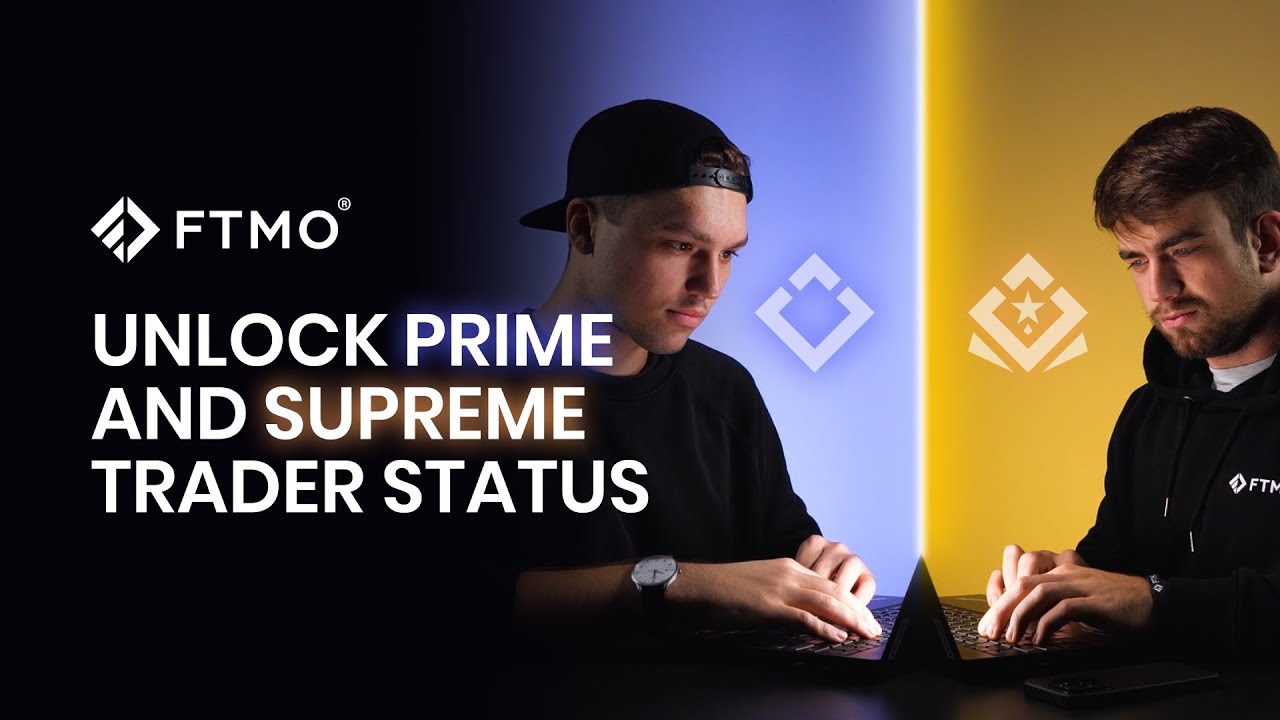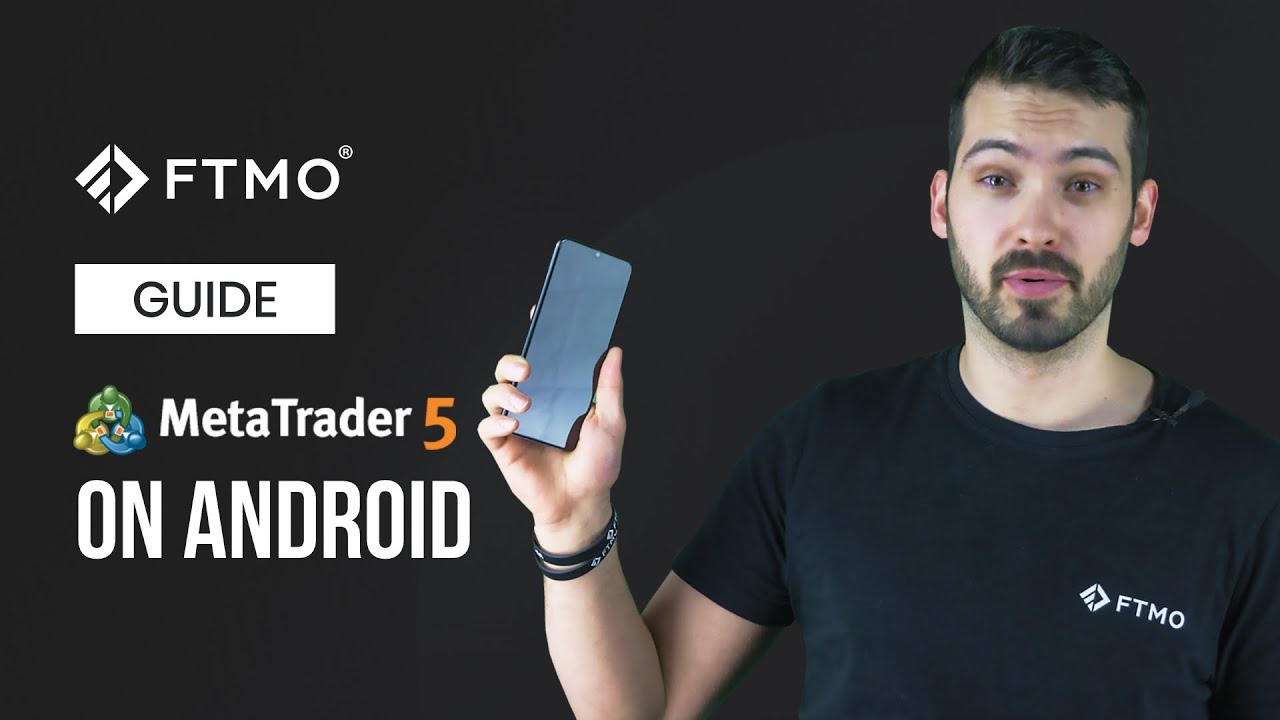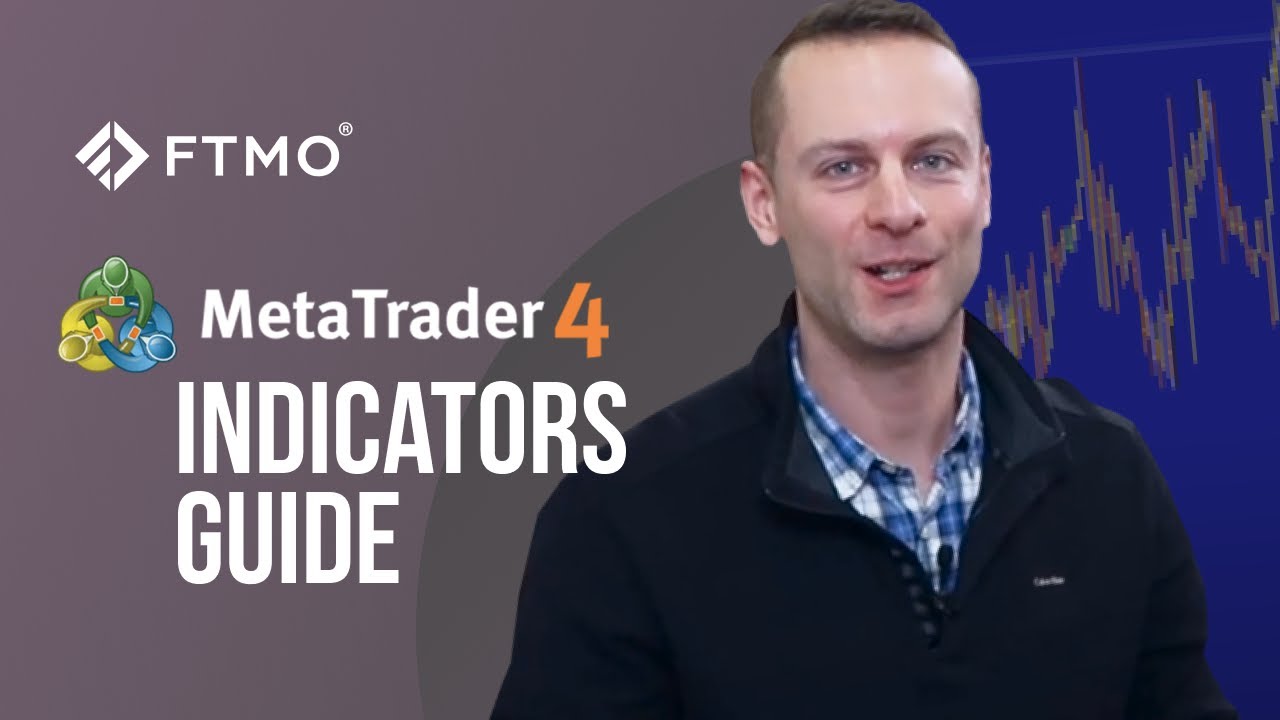For aspiring and experienced traders alike, the allure of trading with a funded account through proprietary trading firms like FTMO is undeniable. FTMO offers a unique opportunity to trade with significant capital without risking your own money, but this privilege comes with strict rules designed to ensure discipline, risk management, and consistency.
Understanding and strictly adhering to the detailed FTMO trading rules is essential and plays a crucial role in successfully passing their comprehensive evaluation process, which ultimately allows you to become a funded trader with FTMO.


This blog post will provide a thorough exploration of these important rules, delving deeply into their meaning and significance. Additionally, it will offer practical and actionable strategies designed specifically to help traders achieve success in their trading endeavors.
What Are FTMO Trading Rules?
FTMO’s evaluation process is carefully designed to rigorously test and assess a trader’s skill, discipline, and risk management abilities before granting them access to a funded trading account. This comprehensive process consists of two main stages: the FTMO Challenge and the Verification phase.
Both of these stages require traders to strictly adhere to a specific set of core trading rules that closely simulate real market conditions and actively enforce professional trading habits, ensuring only the most capable and disciplined traders move forward.
Below is a comprehensive and detailed explanation of the essential FTMO trading rules that every trader must thoroughly understand and strictly follow in order to achieve success in their trading endeavors.
Profit Targets: The Primary Objective
- FTMO Challenge: Traders participating in this challenge are required to achieve a profit target that amounts to 10% of the initial account balance provided to them. This means they need to generate gains equivalent to one-tenth of the starting capital to successfully meet the challenge criteria.
- Verification Stage: The profit target has been set at 5% of the initial balance, meaning the goal is to achieve a gain equivalent to five percent of the starting amount. This target serves as a measurable benchmark to confirm progress and success during this stage of the process.
For example, if you have a $10,000 account, you are required to generate a profit of $1,000 during the Challenge phase and then an additional $500 profit in the Verification phase to successfully pass. This profit target is not simply a goal to aim for; it also serves as a crucial risk management rule. Once you have reached this target, traders are expected to stop trading immediately to avoid taking on any unnecessary risks that could jeopardize their gains.
This ensures that traders are able to demonstrate a clear ability to generate consistent and reliable profits within a reasonable and practical timeframe, effectively reflecting genuine trading discipline and sound investment practices.
Maximum Daily Loss: Your Daily Stop-Loss
- The maximum allowable daily loss limit is strictly set at 5% of the initial account balance, ensuring that losses do not exceed this predetermined threshold within a single trading day. This limit is designed to protect the account from excessive losses and maintain financial stability throughout the trading period.
- This includes both closed trades and unrealized (floating) losses, which are carefully calculated based on the account balance recorded at midnight Prague time (Central European Summer Time, CEST). This approach ensures that all relevant financial activities are accurately reflected within the specified time frame.
For example, if you have an account valued at $100,000, the daily loss limit set for this account would be $5,000. This means you cannot lose more than $5,000 in a single day based on the risk management rules.
Exceeding this specified limit will result in the immediate and automatic failure of the Challenge or Verification process. This important rule is designed to prevent emotional overtrading and to protect traders from experiencing catastrophic financial losses by enforcing a strict daily stop-loss limit that must be adhered to at all times.
Practical Tip: It is highly advisable to continuously monitor your equity in real-time throughout your trading sessions. Make it a point to stop trading immediately once you approach the 5% daily loss threshold. This proactive measure will help you avoid disqualification and protect your overall trading account from significant drawdowns.
Maximum Overall Loss (Drawdown): The Ultimate Boundary
- The maximum overall loss that is permitted throughout the entire evaluation process is set at 10% of the initial account balance. This means that during the evaluation period, the total loss cannot exceed this 10% threshold relative to the starting balance in the account.
- For an account with a balance of $10,000, this means that you are not allowed to incur losses exceeding $1,000 in total throughout the entire duration of the Challenge or Verification phases. This limitation ensures that your overall drawdown remains within a controlled and manageable range during these critical evaluation periods.
This absolute drawdown limit serves as a crucial tool for enforcing long-term risk management strategies, ensuring that traders consistently avoid taking reckless or excessive risks that could potentially jeopardize the stability and overall health of their trading account.
Minimum Trading Days: Proving Consistency
- Traders are required to actively trade for a minimum of at least 4 full trading days throughout the entire evaluation period.
- A trading day refers to any calendar day during which at least one trade is initiated or opened, regardless of whether the position is subsequently held overnight or closed within the same day. This means that as long as a trade is started at any point during that day, it qualifies as a trading day, even if the trader decides to keep the position open beyond the end of the trading session and into the next day.
- The 4 days do not have to be consecutive, allowing for greater flexibility in scheduling. This means you can choose non-sequential days that best fit your personal or professional commitments, making it easier to manage your time effectively.
This particular rule is designed to prevent traders from depending solely on one fortunate trade to achieve a passing result. Instead, it encourages and promotes consistent, steady trading behavior and performance over an extended period of time. This approach helps ensure that success is based on skill and strategy rather than chance.
Forbidden Trading Practices: Maintaining Integrity
FTMO strictly prohibits a variety of specific trading behaviors in order to maintain a high level of fairness and to ensure the overall integrity of the financial markets. These restrictions are put in place to create a balanced and equitable trading environment for all participants.
- Exploiting system errors or delays: Engaging in strategies that deliberately take advantage of price discrepancies, inaccurate information, or slow data feeds caused by system errors or delays is strictly prohibited and not allowed under any circumstances.
- Manipulative trading involves coordinated trades carried out across multiple accounts or taking opposite positions with the intent to manipulate the market. Such activities are strictly prohibited and not allowed under any circumstances. These practices can distort market prices and undermine fair trading conditions, which is why they are explicitly forbidden.
- Automated exploitation refers to the use of bots, artificial intelligence, or other automated technologies to gain unfair advantages or manipulate the platform in ways that are not permitted. Such activities are strictly prohibited to ensure a fair and equitable environment for all users. Engaging in any form of automated exploitation undermines the integrity of the platform and is therefore not allowed under any circumstances.
- Non-replicable strategies refer to trades that cannot be reasonably duplicated or executed in actual live market conditions. This includes scenarios such as taking on excessively large positions that are not feasible to manage or enter into realistically. As a result, such strategies are strictly disallowed to ensure practical and achievable trading practices.
- Gap trading around major news events: Engaging in trading activities during highly volatile news events or maintaining open positions throughout the weekend is generally restricted. These limitations apply unless you are utilizing specific types of accounts, such as Swing Accounts, which are designed to accommodate holding positions over extended periods, including weekends.
Strictly adhering to these specified rules is essential to ensure that your trading style not only remains professional but also fully compliant with all of FTMO’s established standards and guidelines. This adherence helps maintain the integrity and consistency required for successful trading within FTMO’s framework.
Additional FTMO Rules and Guidelines
- Leverage: FTMO sets a maximum leverage limit at 1:100, which plays a crucial role in helping traders effectively manage and control their risk exposure while trading. This cap is designed to provide a balanced approach, allowing sufficient buying power without excessively increasing the potential for significant losses.
- Trading Instruments: Traders have the opportunity to engage in trading a wide variety of financial instruments, including Forex, indices, commodities, stocks, and cryptocurrencies. This extensive range of options offers diverse opportunities for traders to explore different markets and develop multiple strategies.
- Trading Platforms: FTMO offers support for several widely used trading platforms, including MetaTrader 4, MetaTrader 5, and cTrader, as well as its proprietary platform known as DXtrade. This variety ensures traders have multiple options to choose from based on their preferences and trading styles.
- No Copy Trading: Copying or replicating trades from other users’ accounts is strictly prohibited in order to maintain the integrity of the platform and to ensure a fair and accurate assessment of each individual’s trading skills and decision-making abilities.
- Expert Advisors (EAs): These automated trading systems are allowed for use; however, they must strictly comply with all established risk management rules to ensure safety and reliability. Additionally, each EA must be thoroughly tested and validated through extensive backtesting and forward testing before being deployed in live trading environments.
These additional rules are designed to support and maintain a fair and professional trading environment, ensuring that all participants have an equal opportunity to succeed. At the same time, they provide ample flexibility, allowing traders to adapt and express their unique trading styles without unnecessary restrictions or limitations.
Summary of the Key FTMO Trading Rules
| Rule | Requirement | Purpose |
|---|---|---|
| Profit Target | 10% (Challenge), 5% (Verification) | Demonstrate consistent profitability |
| Maximum Daily Loss | 5% of the initial balance | Prevent catastrophic daily losses |
| Maximum Overall Loss (Drawdown) | 10% of the initial balance | Enforce long-term risk management |
| Minimum Trading Days | 4 days minimum | Ensure consistent trading activity |
| Forbidden Practices | No manipulative or exploitative trading | Maintain market integrity and fairness |
| Leverage | Max 1:100 | Control risk exposure |
| Trading Instruments | Forex, indices, commodities, crypto, stocks | Provide diverse trading options |
| Copy Trading | Not allowed | Ensure individual trading skill assessment |
| Expert Advisors (EAs) | Allowed with compliance | Allow automated strategies with risk control |
Understanding and strictly following FTMO’s trading rules is essential for any trader aiming to pass the FTMO Challenge and Verification stages. These rules are designed to test not only your profitability but also your discipline, risk management, and professionalism.
By consistently respecting your established profit targets, adhering strictly to daily and overall loss limits, committing to a minimum number of trading days, and avoiding any forbidden or risky trading practices, you position yourself in a much stronger and more confident place to succeed. These disciplined actions significantly increase your chances of becoming a funded trader and achieving long-term success in the trading world.
Approach the FTMO evaluation as a real trading environment, develop a solid trading plan that respects these rules, and maintain emotional discipline. Doing so will maximize your chances of passing and unlocking the opportunity to trade with significant capital.
Common Mistakes That Lead to FTMO Challenge Failure and How to Avoid Them
Passing the FTMO Challenge is not simply about understanding the rules — it’s about consistently applying those rules accurately and effectively while under significant pressure. Many traders fail not because they lack knowledge, but because they struggle to manage the psychological and practical demands that the evaluation process imposes.
Below, you will find the most common mistakes that lead to failure during the challenge, along with practical strategies and insights to help you overcome these obstacles and improve your chances of success.
Treating the Challenge Like a Game
Many traders often perceive the FTMO Challenge as “not real money” because they pay no fee to participate but are trading with FTMO’s capital rather than their funds. This common mindset, often referred to as the house money effect, can cause traders to take reckless trades and demonstrate poor risk management habits. They may feel less accountable for losses since it is not their money on the line, leading to behaviors that would typically be avoided if they were trading with their capital.
- Why it happens: The brain tends to perceive the challenge fee as a sunk cost or “play money,” which results in a decrease in caution. This psychological effect makes individuals feel less careful or guarded because they view the fee as already spent and not recoverable, leading them to take more risks than they normally would.
- Consequence: Engaging in trades that you would typically avoid, exposing yourself to excessive risks, and consistently breaking established rules and guidelines. This behavior can lead to significant losses and undermine your overall trading strategy and discipline.
How to avoid: Approach the challenge as if you are managing real trading capital with full responsibility. Cultivate a professional mindset by treating every dollar involved with the utmost respect and care, just as you would if it were your own hard-earned money. This disciplined attitude will help you make thoughtful decisions and avoid careless mistakes.
Revenge Trading After a Loss
After experiencing a small loss, traders often feel a strong and immediate urge to quickly recover their losses, which can lead them to make impulsive and poorly thought-out trades. These hasty decisions frequently result in breaking established risk limits and guidelines, potentially causing even greater financial setbacks.
- Why it happens: This occurs because of an emotional reaction to experiencing losses, which is strongly influenced by the psychological principle known as loss aversion. In this context, the pain or discomfort caused by losing something is perceived to be approximately twice as intense and distressing as the pleasure or satisfaction gained from an equivalent win or gain.
- Consequence: Exceeding daily loss limits can lead to significant financial setbacks, as it often results in rapidly compounding losses that become increasingly difficult to recover from. This behavior can escalate the overall risk and negatively impact long-term financial stability.
How to avoid losses: Accept losses calmly and with patience, understanding that they are a natural part of trading. Take a break if needed to clear your mind and regain focus, allowing yourself time to reflect without pressure. Always stick to your well-thought-out trading plan consistently, avoiding the temptation to chase losses impulsively or make rash decisions in an attempt to recover quickly.
Using Untested or Poorly Understood Expert Advisors (EAs)
Automated trading systems can be very tempting for traders looking to simplify their strategies, but many traders often deploy Expert Advisors (EAs) without fully understanding how these systems behave under stressful market conditions or during significant drawdowns. This lack of comprehension can lead to unexpected outcomes and potential losses.
- Why it happens: This often occurs due to an excessive level of confidence placed in backtested results or the claims made by vendors. People tend to overestimate the reliability of these results without fully considering the limitations and potential biases involved.
- Consequence: Unexpectedly large drawdowns or significant rule breaches that occur as a result of unmonitored or poorly supervised bots operating without adequate oversight or control.
How to avoid: It is essential to thoroughly backtest and forward test Expert Advisors (EAs) under real-life trading conditions to ensure reliability and performance. Make sure that these EAs strictly adhere to FTMO’s specific risk management parameters and incorporate effective drawdown recovery mechanisms to minimize potential losses and maintain account stability.
Ignoring Daily Loss Limits
Small daily losses may seem insignificant at first, but they can accumulate rapidly and significantly over time if traders fail to strictly adhere to the 5% daily loss rule. Ignoring this important guideline can lead to substantial financial setbacks much faster than anticipated.
- Why it happens: This issue often occurs due to a lack of effective real-time monitoring of the situation, combined with an emotional detachment from the ongoing floating losses. When individuals fail to actively track their positions as market conditions change, they may become disconnected from the actual impact of these unrealized losses. This emotional distancing can lead to poor decision-making and an inability to respond promptly to adverse movements, ultimately exacerbating the problem.
- Consequence: Violating the established daily loss limits results in an immediate and automatic failure. This strict rule is enforced to ensure disciplined risk management and prevent further losses beyond the set boundaries.
How to avoid: Make sure to monitor your equity very closely at all times throughout the trading day. As soon as you notice that you are nearing your predetermined daily loss limit, it is important to immediately stop trading to prevent further losses.
Lack of Emotional Preparation and Discipline
The intense psychological pressure associated with the Challenge can often lead traders to stray from their carefully crafted plans, engage in excessive or impulsive trading activities, or even experience moments of panic and anxiety that impair their decision-making process.
- Why it happens: Stress, fear, and excitement significantly influence and alter the way decisions are made, often causing people to think and act differently than they would under calm and neutral circumstances. These intense emotions can impact judgment, leading to decisions that may not always be fully rational or well-considered.
- Consequence: Engaging in undisciplined trades, exhibiting impatience, and consistently failing to adhere to established rules can lead to significant negative outcomes. These behaviors often result in poor decision-making and increased risk, ultimately undermining success and profitability.
How to avoid: Cultivate patience and develop strong discipline over time. Make sure to take regular breaks after experiencing losses to clear your mind and prevent frustration. Maintain a calm and composed mindset throughout the process, and approach the Challenge with the seriousness and professionalism it requires, treating it as a dedicated professional endeavor rather than a casual activity.
Following Random Tips or Social Media Advice
Many traders often end up abandoning their carefully tested and proven strategies in favor of chasing after “hot tips” or attempting to mimic the trades they see others making on various social media platforms. This tendency to follow the crowd without thorough analysis can lead to inconsistent results and increased risk.
- Why it happens: The phenomenon often occurs due to the fear of missing out, commonly known as FOMO, combined with a strong desire to achieve quick success. This powerful mix drives individuals to act impulsively, hoping to seize opportunities before they disappear and to experience rapid results in a short amount of time.
- Consequence: Experiencing inconsistent results and frequent violations of established rules and guidelines.
How to avoid mistakes: Always stick closely to your well-tested and proven trading plan without deviating from it. Use social media platforms only as a source of inspiration and ideas, never as direct instructions or a substitute for your own research and decision-making process.
Strategies to Pass the FTMO Challenge
Passing the FTMO Challenge requires much more than simply having good trading skills—it demands a high level of discipline, rigorous risk management, and a carefully crafted, well-thought-out trading plan. To increase your chances of success, it is essential to implement proven strategies designed specifically to help you effectively navigate the evaluation process and meet all the necessary criteria:
Plan Your Trades with Clear Parameters
- Develop a detailed trading plan that specifies your entry points, exit targets, and risk parameters.
- Align your plan with FTMO’s rules, especially respecting profit targets and loss limits.
- Use technical indicators like Fibonacci retracements, moving averages (20, 100, 200), and currency strength analysis to identify high-probability trades.
- Avoid impulsive trades; only take setups that fit your strategy and risk profile.
Implement Strict Risk Management
- Risk no more than 1-2% of your account per trade to stay within the 5% maximum daily loss and 10% overall loss limits.
- Calculate position sizes carefully based on stop-loss distance and risk percentage. For example, on a $100,000 account, risking 1% means a maximum loss of $1,000 per trade.
- Use fixed stop-loss and take-profit levels to control risk and lock in profits.
- Avoid “all-in” or revenge trades after losses; maintain consistent risk exposure.
Track Your Progress and Monitor Equity
- Keep a close eye on your daily equity and floating losses, especially considering FTMO’s Central European Time (CEST) daily reset.
- Stop trading for the day once you approach the 5% daily loss limit to avoid disqualification.
- Maintain a trading journal to record your trades, emotions, and lessons learned, which helps improve discipline and strategy over time.
Trade Consistently Over Minimum Trading Days
- Ensure you trade at least 4 trading days during the Challenge and Verification stages.
- A trading day counts as any day you open at least one position, even if held overnight.
- Consistency demonstrates your ability to perform over time rather than relying on a single lucky trade.
Avoid Overtrading and Know When to Stop
- Once you reach the profit target (10% in Challenge, 5% in Verification), stop trading immediately to lock in your success.
- Avoid chasing losses or overtrading to recover from drawdowns, as this often leads to rule violations.
- Patience is key: wait for high-quality setups rather than forcing trades.
Test and Optimize Your Expert Advisors (EAs)
- If you use automated trading systems, backtest and forward test your EAs under live market conditions similar to FTMO’s environment.
- Ensure your EAs comply with FTMO’s risk rules, including daily loss limits and maximum drawdown.
- Monitor EA performance regularly and be ready to intervene if market conditions change.
Maintain Emotional Discipline and a Professional Mindset
- Treat the Challenge as if you are trading your capital; avoid the “house money” mentality.
- Accept losses as part of the process and resist the urge to increase position sizes after setbacks.
- Incorporate routines such as journaling, regular breaks, and mindfulness to manage stress and maintain focus.
Remember, maintaining consistency and practicing discipline over time often proves to be far more valuable and effective than relying on short-term luck or chance.
Bonus Tips from Successful FTMO Traders
- Use a risk-reward ratio of 1:2 or 1:3 to effectively maximize your overall profitability while simultaneously keeping your risk exposure well-controlled and manageable. This approach helps balance potential gains against potential losses, enhancing your chances for consistent success over time.
- Spread your risk by engaging in multiple trades rather than focusing all your investment on just one single position. This approach helps to minimize potential losses and balances your overall portfolio more effectively. Diversifying your trades allows you to take advantage of various market opportunities while reducing the impact of any one trade performing poorly.
- Concentrate your trading efforts on currency pairs or financial instruments where your strategy consistently delivers the best performance, and avoid engaging with random or unfamiliar pairs that may not align well with your approach or could introduce unnecessary risk.
- Make sure to fully understand FTMO’s specific time zone, which is Central European Summer Time (CEST), for when daily loss limits reset each day. This knowledge is crucial to avoid unintentionally breaking any rules related to daily loss limits. Being aware of the exact timing helps you manage your trades effectively and stay compliant with FTMO’s guidelines.
Summary of the Key Strategies to Pass the FTMO Challenge
| Strategy | Description | Benefit |
|---|---|---|
| Clear Trading Plan | Define entries, exits, and risk per trade | Consistency and rule compliance |
| Strict Risk Management | Risk 1-2% per trade, fixed stop-loss/take-profit | Protect capital, avoid disqualification |
| Monitor Equity & Daily Loss | Track real-time equity, respect daily loss limit | Prevent rule breaches |
| Trade Minimum 4 Days | Trade at least 4 days during evaluation | Demonstrate consistency |
| Avoid Overtrading | Stop after the profit target or near the loss limits | Preserve gains and avoid losses |
| Test Expert Advisors (EAs) | Backtest and forward test automated strategies | Ensure reliability and rule compliance |
| Emotional Discipline | Professional mindset, stress management | Maintain focus and avoid impulsive trades |
By effectively combining these well-thought-out strategies with a comprehensive and solid understanding of FTMO’s specific trading rules and guidelines, you can greatly enhance and significantly improve your overall chances of successfully passing the Challenge.
This will ultimately allow you to confidently move forward and begin trading with funded capital, opening up new opportunities for financial growth and trading success.
Current Trends and Developments in Prop Trading
The proprietary trading (prop trading) industry, with FTMO standing out as a prominent and influential player, is undergoing rapid and significant evolution in 2025 to more effectively serve traders and adapt seamlessly to the ever-changing dynamics of the global market environment.
Here are some of the most important trends and developments that are currently shaping and transforming the landscape:
Swing Accounts: Flexibility to Hold Trades Over Weekends and News Events
Traditional FTMO accounts restrict holding positions over weekends or major news releases to limit risk. However, many prop firms, including FTMO, now offer Swing Accounts that allow traders to hold trades through volatile periods such as weekends and economic events, albeit with adjusted risk parameters.
- This flexibility enables traders to implement longer-term strategies and capitalize on broader market moves without being forced to close positions prematurely.
- Swing Accounts often come with different loss limits and profit targets tailored to accommodate the increased risk.
Scaling Plans: Growing Capital Based on Consistent Performance
A significant and impactful development in the world of prop trading is the introduction and adoption of scaling plans, which allow traders to gradually increase their capital allocation as they consistently demonstrate strong and reliable profitability over time.
This innovative approach provides traders with the opportunity to grow their trading accounts systematically, rewarding their skills and performance with progressively larger amounts of capital to manage.
- FTMO’s scaling plan, for example, allows traders to receive a 25% capital increase every four months if they achieve at least 10% profit over that period, with two positive months out of four.
- This approach rewards disciplined traders by gradually increasing their trading capital, potentially reaching hundreds of thousands of dollars under management.
- Scaling plans motivate traders to maintain steady performance over time rather than seeking quick wins.
Increased Use of AI and Advanced Trading Tools
Artificial Intelligence (AI) and advanced machine learning technologies are rapidly becoming essential and deeply integrated components in the world of proprietary trading. These cutting-edge technologies are transforming how trading decisions are made, enabling traders to analyze vast amounts of data with unprecedented speed and accuracy.
As a result, AI and machine learning are not just supplementary tools but are increasingly foundational to the success and innovation within prop trading firms.
- Traders are leveraging AI-driven backtesting assistants, technical analysis toolkits, and algorithmic trading systems to refine strategies and improve decision-making.
- FTMO and other firms provide access to sophisticated platforms like MetaTrader 4/5, cTrader, and proprietary platforms enhanced with AI features.
- While AI tools offer an edge, traders must ensure these automated strategies comply with prop firm risk rules and are thoroughly tested under live conditions.
Focus on Psychological Coaching and Trader Development
Recognizing that maintaining strong emotional discipline is critical for achieving long-term success, many proprietary trading firms now offer comprehensive performance coaching and psychological support programs designed to help traders manage stress and improve decision-making.
- FTMO provides mindset coaching, performance reviews, and educational resources to help traders manage stress, maintain discipline, and improve consistency.
- This holistic approach addresses the psychological challenges of trading under evaluation pressure, which is often a major hurdle for many traders.
- Coaching services help traders build resilience, avoid common pitfalls like revenge trading, and develop a professional trader’s mindset.
Broader Market Access and Account Options
Proprietary trading firms, commonly known as prop firms, are increasingly broadening their range of offerings to encompass a much wider variety of trading instruments and diverse account types. This expansion allows traders to access an extensive selection of financial products, catering to different trading styles and preferences.
By incorporating various asset classes and tailored account options, prop firms are providing more comprehensive and flexible solutions designed to meet the unique needs of individual traders and institutional clients alike.
- Besides Forex, traders can access indices, commodities, cryptocurrencies, and stocks, allowing diversification and strategy flexibility.
- Account sizes now range from $10,000 up to $200,000 or more, catering to different trader experience levels and risk appetites.
- Some firms offer instant funding models or lower challenge fees to attract a broader trader base.
Industry Consolidation and Regulation
The proprietary trading industry is currently undergoing a significant phase of consolidation, where a small number of major firms, such as FTMO, are anticipated to capture and dominate a substantial portion of the overall market share.
Alongside this trend, there is a growing movement advocating for increased transparency and the implementation of stricter regulation measures. These steps aim to improve the level of professionalism within the industry and foster greater trust among traders and investors alike.
- FTMO leads by example through transparent trading statistics, free access to challenge accounts, and clear rules.
- Regulatory oversight, while still emerging, is anticipated to bring more standardized practices across the industry.
Summary of the Key Prop Trading Trends in 2025
| Trend | Description | Impact on Traders |
|---|---|---|
| Swing Accounts | Allow holding trades over weekends/news events | Enables longer-term strategies, more flexibility |
| Scaling Plans | Capital increases based on consistent profits | Rewards discipline, grows trader capital |
| AI & Advanced Tools | Use of AI for backtesting, analysis, and automation | Enhances strategy refinement and execution |
| Psychological Coaching | Mindset and performance coaching | Improves emotional discipline and consistency |
| Broader Market Access | More instruments and account sizes | Greater diversification and choice |
| Industry Consolidation & Regulation | The market is dominated by a few firms with growing oversight | Increased professionalism and trust |
The prop trading industry in 2025 is characterized by greater flexibility, technological innovation, and a stronger focus on trader development. FTMO and similar firms are adapting by offering Swing Accounts, scaling capital programs, AI-enhanced tools, and psychological coaching to empower traders to succeed.
These emerging trends are making proprietary trading significantly more accessible and sustainable for a much broader and diverse range of traders, spanning from complete beginners who are just starting to seasoned professionals with years of experience in the market.
By consistently staying well-informed about these ongoing developments and actively leveraging the wide range of available resources, traders can significantly enhance their ability to successfully pass evaluations and strategically position themselves to thrive and excel in the continuously evolving and competitive proprietary trading environment.
FAQs
What happens if I breach the maximum daily loss?
Breaching the maximum daily loss limit, which is 5% of the initial account balance, results in immediate failure of the FTMO Challenge or Verification stage. This rule is strictly enforced to ensure disciplined risk management.
Can I use automated trading strategies during the evaluation?
Expert Advisors (EAs) and automated strategies are allowed during the FTMO Challenge and Verification. However, they must comply with all FTMO trading rules, including risk limits, and should be thoroughly backtested and forward-tested to ensure reliability under live conditions.
How many days do I need to trade during the FTMO Challenge?
You must trade on at least 4 separate trading days during both the FTMO Challenge and Verification stages. A trading day is counted when at least one position is opened, regardless of whether the trade is held overnight. These days do not need to be consecutive.
Is there a leverage limit?
FTMO implements a strict leverage cap of 1:100 on all account types to effectively manage and limit risk exposure. This policy is designed to encourage traders to engage in responsible and prudent trading practices while maintaining a balanced approach to market opportunities.
Can I hold trades over weekends or major news events?
Generally, holding trades over weekends or during major news events is not allowed in the standard FTMO Challenge and Verification accounts. However, FTMO offers Swing Accounts that permit holding positions over weekends and news releases, with adjusted rules to accommodate the increased risk.
In Conclusion
Challenge and Verification stages. These rules are carefully designed to emphasize disciplined risk management, consistent trading behavior, and ethical practices, all of which simulate real-world trading conditions and prepare traders for the responsibility of managing funded accounts.
By thoroughly understanding and consistently respecting the clearly defined profit targets, maximum allowable daily and overall loss limits, minimum required trading days, and strictly forbidden trading practices, traders can significantly enhance their chances of achieving long-term success and stability in the market.
Approaching the FTMO Challenge with a professional mindset, a well-structured trading plan, and strict adherence to the rules is crucial. Remember, the objective is not only to pass the Challenge but also to develop sustainable trading habits that will serve you well throughout your trading career. Consistency, patience, and emotional discipline are as important as technical skill in achieving long-term success with FTMO.
By focusing on these principles and continuously refining your approach, you position yourself to unlock the opportunity to trade with substantial capital and keep up to 90% of your profits, making FTMO an excellent platform for serious traders in 2025 and beyond.
Discover more from BizTechNomy
Subscribe to get the latest posts sent to your email.





